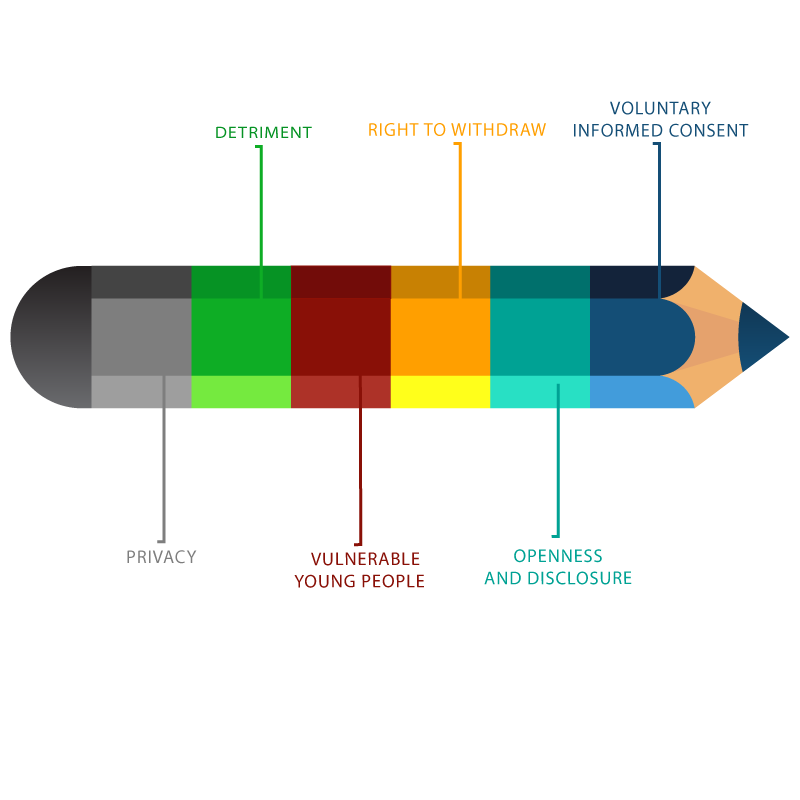
This section examines the series of related philosophical assumptions which frame research (Grix 2002). In particular, the contextual, theoretical, methodological, ethical and practical foundations which informed the design, plan and conduct of the presented research are critically evaluated.
The Research Question
As a natural scientist, my broadly positivist beliefs about the nature of reality and knowledge (Guba and Lincoln 2005), have been strongly influenced by my academic background and traditions in Mathematics and Physics. Such ontological and epistemological assumptions, laid the basis for the research presented as it aims to discover generalisable explanations that can be explained externally from the observed sample to a wider population having similar characteristics and contextual affordances (for instance gender, age and academic subject as detailed in the research question presented below), in terms of the statistical significance and effect size achieved.
The research question that I have identified, seeks to empirically evaluate the GIA framework presented in the previous section, in terms of students’ academic achievement. It is important to note that such achievement, operationally defined for the purpose of this dissertation as the score or grade obtained on standardised tests measuring the different levels of the cognitive domain set by Bloom’s taxonomy of educational objectives (Bloom 1956) is not a defining criterion for the framework. This is because a game-informed approach to assessment goes beyond a mere summative evaluation of academic performance. However, as already discussed, academic achievement as derived from the product of standardised testing plays a predominant role in the research context and provides a definite basis for immediate comparison and evaluation. More specifically, the research question that I have devised is the following:
Does a game-informed approach to assessment using digital assessment technologies improve the Physics test scores of Form 5 male students in Malta?
The Research Design
Video 5 The Research Design [created by S. Bezzina]
(download reference pack here)
Teacher-Researcher
Due to institutional and logistical constraints, the small-scale empirical study presented in this dissertation was planned and conducted by me, as the researcher and as a practicing teacher in my own classroom. As such, the nature of this teacher-initiated classroom-based inquiry required a number of important considerations about the teacher-researcher role adopted.
My dual role of teacher-researcher undoubtedly gave rise to a number of practical implications which had an impact on the overall research design and methods employed. Although logistical constraints in the secondary school where the research was carried out limited the sample size to be included in the study, the immediacy and access to gatekeepers, participants and physical resources (such as laboratories equipped with interactive whiteboards, computers with internet connection and digital assessment technologies) were vital to the overall study.

Figure 17 Teacher-Researcher [edited and adapted by S. Bezzina] (Freepik #9 n.d.)
Being the classroom teacher, I brought insider knowledge (Cochran-Smith and Lytle 1993) to the research project. My ‘social, cultural and micro-political’ (Punch 2009, p 44) understanding of the context in which the study was conducted, allowed for a better consideration in planning the research design and determine the methods to be employed. However, this insider status could be possibly regarded as a source of subjectivity and bias. In order to address such risks, actions and interactions related to teaching and researching purposes within the teacher-researcher duality were clearly labelled, prior to conducting the research. Learning and assessment outcomes were the main focus and centre of activity behind the in-class learning and teaching acts; while reflections on such actions in research terms were conducted externally and a posteriori, outside of the classroom. This outsider status was often shared with and cross-checked by colleagues in the Physics department who acted as critical friends and provided invaluable feedback. The separation of roles between the teaching and researching aims across the classroom boundary served to minimise the effect of a possible confounding bias in the form of procedural subjectivity (Eisner 1992).
Participants

The Form 5 cohort (15-16 years) in the local boys’ secondary school where the research was carried out comprised of a total of 120 students in 6 different classes. Two intact Physics groups from the whole form were randomly selected and invited to take part in the research. Each individual student in these 2 groups accepted the invitation and thus the groups were randomly assigned to the two different intervention conditions; the traditional (control group) and game-informed (experimental group) approaches to assessment.

Figure 18 Participants [edited and adapted by S. Bezzina] (Freepik #10 n.d.)
All the participants had been studying Physics for 2 years prior to the commencement of the research as the subject is considered to be compulsory in secondary state schools. The average group scores obtained during all the past standardised Physics examinations for the 15 students in the control group (mean age: M = 15.2 years) and the 15 students (mean age: M = 15.3 years) comprising the experimental group were retrieved in order to quantify the students’ prior academic performance, which was taken as a covariate (Hedges 2012).
Ethical Considerations
Due to the young age of the participants (mean age: M = 15.25 years), the research had to address a number of important ethical considerations, drawing on and consistent with the British Educational Research Association ethical guidelines (BERA 2011). Besides ethical approval from a representative of the Moray House School of Education Ethics Committee at the University of Edinburgh, institutional endorsement to carry out the research, was sought and obtained from the Ministry for Education and Employment in Malta and the school headteacher (Appendix A). Permission to work directly with students was granted by my permanent teachers’ warrant, which attests that I am a Maltese citizen of good conduct and full legal capacity, in possession of a Degree of Bachelor in Education and have had satisfactory teaching experience in a licensed school for at least two scholastic years full-time (Malta Education Act 1988).

Figure 19 Ethical Considerations [edited and adapted by S. Bezzina] (Freepik #11 n.d.)
Adequate information about the research, including a consent approval form (Appendix B), was presented to the prospective participants and their parents or legal guardians. Prior to the commencement of the study, voluntary written informed consent to take part in the research was sought and obtained from the parents or legal guardians on behalf of the students (BERA 2011), while voluntary verbal informed consent was obtained from the individual students (UN General Assembly 1989). In both abovementioned instances, the individual participants’ right to withdraw from the study, for any or no reason without any repercussions, was explained and made available throughout the whole duration of the research (BERA 2011).
Equity between groups, both in terms of subject content and innovation in the use of digital assessment technologies, was ensured in order not to allow any participating individual or group to be at a disadvantage or become negatively affected by the research. The latter was confirmed via a questionnaire measuring the prior use of digital technologies for assessment purposes for both groups. All the data collected throughout the study was treated with strict confidence and anonymity at all times (BERA 2011). In particular, the identity of all participants, including the school was concealed in all documents pertaining to the research.
